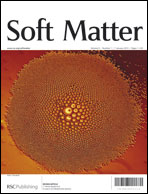Emulsions are highly dynamic entropically stabilised systems. In oil-in-water emulsions, it is generally believed that oil transfer from one droplet to another via a series of destabilisation processes (e.g. Ostwald ripening or coalescence) leads to droplet growth. Rapid oil exchange between oil droplets of toluene in toluene/Triton X-100/water emulsions was recently evidenced, without any measurable concomitant change in emulsion droplet size. This dynamic process is the result of oil permeation upon droplet collision through transient holes at the surface of the surfactant layer or via reversible partial coalescence of the oil droplets, i.e. a fusion/fission mechanism. The kinetics of the oil exchange can be monitored by pulsed field gradient-NMR. The time constant of the oil exchange equates to the critical NMR observation time, Δswitch. Here we probe this rapid oil exchange between droplets as a function of emulsion age. The timescale of emulsion ageing is determined from static light scattering and macroscopic phase separation data. The timescale of the dynamic oil exchange is extracted from the NMR data. The switching time Δswitch, is an increasing function of emulsion age. Three effects must be considered when explaining the kinetics of oil exchange as a function of emulsion age: (1) the increasing droplet size; larger droplets move more slowly and interact with one another less frequently leading to a decrease in both the collision frequency and the rate of oil exchange; (2) the increased droplet concentration that arises upon emulsion ageing, reducing the average distance between droplets and (3) the properties of the interfacial domain.

You have access to this article
 Please wait while we load your content...
Something went wrong. Try again?
Please wait while we load your content...
Something went wrong. Try again?


 Please wait while we load your content...
Please wait while we load your content...